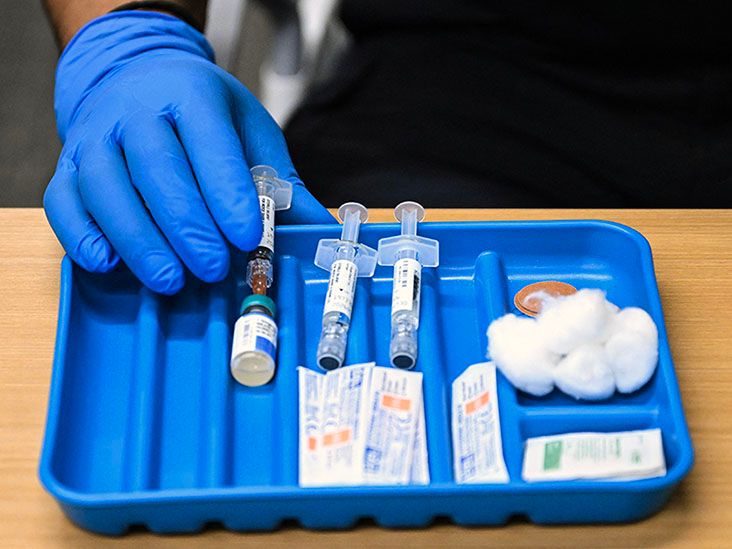When tissues in the body become less responsive to the hormone insulin, it is known as insulin resistance. For some people, lifestyle changes can help improve or reverse this physiological state.
Insulin is a hormone that the pancreas naturally produces. Many of insulin’s effects involve the optimal use of glucose, or blood sugar, by tissues within the body, such as fatty tissues, muscle, and the liver.
When cells become less responsive to insulin, the pancreas has to create more insulin to achieve the desired physiological effects. This is called insulin resistance.
Over time, this resistance can become too much for the pancreas to compensate for, and cells become desensitized to insulin signaling. This can prevent them from taking up glucose from the bloodstream.
Persistently high blood glucose levels lead to prediabetes and type 2 diabetes.
Although the exact mechanisms behind insulin resistance are complex, it is a physiological state that many people can improve or reverse. This article explores the different options that can have a positive effect on insulin resistance.
Physical activity can increase the body’s insulin sensitivity — the level of responsiveness cells demonstrate toward insulin. It does this through a complex network of reactions that boost the muscles’ need for energy, consequently increasing the rate at which they pull glucose from the bloodstream.
The more glucose pulled from the bloodstream, the lower a person’s blood glucose levels become.
According to a
Increased physical activity can lower blood glucose for up to 24 hours.
Losing weight is another cornerstone of improving insulin resistance. Excess fatty tissue contributes to insulin resistance in various ways.
Excess body fat can create an imbalance in certain pro-inflammatory molecules that can impair insulin signaling and generate an abundance of fatty acids that circulate in the bloodstream. These fatty acids can accumulate in tissues and alter insulin sensitivity.
Excess fatty tissue can also build up around organs, such as the liver, disrupting overall function, including processes related to insulin signaling.
An abundance of research exists on the benefits of weight loss for improving insulin sensitivity. A 2017 study cited weight loss as the
A 2015 study funded by the National Institute of Diabetes and Digestive and Kidney Diseases (NIDDK) found that for people at high risk for diabetes, losing
According to the American Diabetes Association (ADA), no specific diet has been proven most effective for improving insulin resistance. Diet influences insulin sensitivity directly and indirectly. It affects real-time glucose levels in the bloodstream and also contributes to chronic conditions such as obesity.
Types of food and caloric value can matter in insulin resistance, but overall, a balanced diet is most important.
This includes following a
- increasing vegetable intake
- eating more fiber
- reducing carbohydrates
- lowering sugar intake
- avoiding trans fats and heavily processed foods
- reducing salt intake
- focusing on healthy fats
- using herbs and spices for flavor over premade sauces
In a 2019 overview of current scientific reports, experts noted specific dietary recommendations for improving insulin resistance. These include:
- reducing simple sugar intake, particularly from sugary beverages and juices
- eating plenty of whole grains and nonstarchy vegetables
- focusing on carbohydrates with a low glycemic index
- eating less fats, but choosing quality fats, such as omega-3s
- eating the majority of calories early in the day rather than at night
- practicing slow, mindful eating
Some evidence also suggests that certain supplements may help improve how the body uses insulin. Vitamin D3, for example, may help reduce inflammation — one of the many factors associated with developing insulin resistance.
Sleep deprivation has a complex relationship with insulin resistance. Low quality sleep, too little sleep, or both can disrupt the body’s sleep-wake rhythm, or circadian rhythm, which influences glucose metabolism.
Disrupted sleep can also alter hormone levels and affect appetite, among many other things.
A
A person
- exercising regularly
- maintaining a consistent sleep-wake schedule
- keeping sleep areas cool, quiet, and dark
- avoiding electronics before bedtime
- keeping evening meals light
Stress is any challenge to the body and mind. It happens every day for a variety of reasons. Short-term stress can have beneficial effects, but the opposite is true for long-term or chronic stress.
Over time, hormones released by the body’s stress response, such as cortisol and adrenaline, disrupt insulin signaling. They encourage the production of glucose as an emergency energy response but, at the same time, limit its use as a way of ensuring a ready supply.
According to 2022 research, stress impairs glucose balance through
Relaxation strategies that may help manage stress
- breathing exercises
- autogenic training, which involves mental exercises to focus on the body’s experience of relaxation
- self-hypnosis
- biofeedback-assisted relaxation, which involves using an electronic device to see how changes in the body respond to feeling stressed or relaxed
- guided imagery, which consists of visualizing relaxing or calming objects, scenes, or events to help create a similar feeling in the body
- meditation
- progressive muscle relaxation
The Centers for Disease Control (CDC) states that smoking increases type 2 diabetes risk by
Smoking affects insulin resistance in
- Nicotine alters cellular makeup, reducing insulin responsiveness.
- Chemicals in cigarettes create body-wide harm and inflammation.
- Smoking is associated with a higher risk of excess fatty tissue around the abdomen.
There is
Insulin resistance is a physiological state in which the body becomes less responsive to the hormone insulin. Over time, insulin resistance leads to elevated blood sugar levels, which may develop into type 2 diabetes and other complications.
Lifestyle changes can help improve or reverse insulin resistance. Physical activity, a balanced diet, and stress management are among the key areas of focus.


